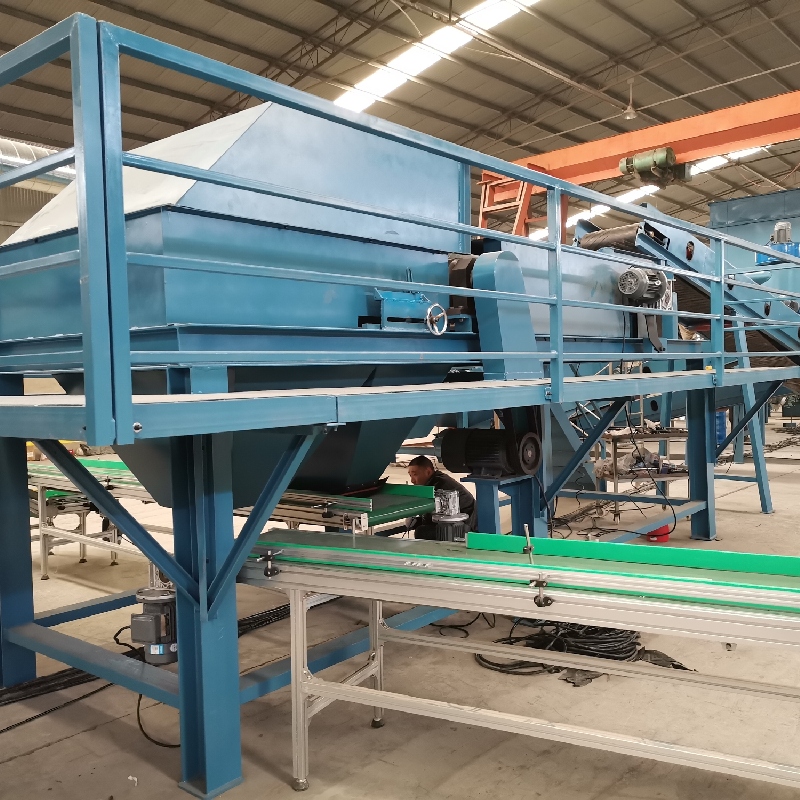

Ліст . 08, 2024 10:50 Back to list
Understanding Double Shaft Shredder Blades Key Components for Efficient Material Processing
In today's rapidly evolving industrial landscape, the demand for efficient material processing solutions is ever-increasing. One of the essential tools that cater to this demand is the double shaft shredder. This machine is widely utilized in various sectors, including recycling, waste management, and manufacturing, to shred a variety of materials into manageable sizes. At the heart of the double shaft shredder's performance are its blades, which play a crucial role in determining the efficiency, effectiveness, and longevity of the shredding process.
What is a Double Shaft Shredder?
A double shaft shredder is characterized by its two parallel shafts that rotate in opposite directions. This design enables the machine to handle large quantities of tough materials effectively. The dual shaft configuration allows for better control over the shredding process, offering reduced noise levels and lower energy consumption compared to other types of shredders. It is particularly effective for processing materials like plastics, wood, paper, metal, and electronic waste.
The Role of Shredder Blades
Shredder blades are the critical components that cut and shear materials into smaller pieces. In a double shaft shredder, the blades are mounted onto the rotating shafts, and as these shafts turn, the blades work together to crush, shear, and pull materials apart. The design, material, and sharpness of the blades significantly affect the shredder's performance.
1. Blade Design The blade design is paramount in optimizing the shredding process. There are several configurations, including straight and spiral blades, each suited for different types of materials. Straight blades provide a more aggressive cut, making them ideal for hard materials, while spiral blades offer a smoother operation for fragile substances. Manufacturers often tailor blade designs to meet specific material handling requirements.
2. Material Composition The material used for manufacturing the blades is also vital. High-quality steel, often alloyed with other metals for added strength and durability, is the common choice. This robust material ensures that the blades can withstand the rigors of shredding tough materials without deforming or dulling quickly. Additionally, some shredder blades may undergo heat treatment or special coatings to enhance their hardness and wear resistance.

3. Blade Sharpness The sharpness of the blades is crucial for efficient shredding. Dull blades require more power and exert more stress on the machine, leading to decreased efficiency and increased wear. Regular maintenance, including sharpening or replacing blades, is essential to ensure optimal performance. Operators should monitor the condition of the blades frequently and schedule routine maintenance to prolong the life of the shredder.
Applications of Double Shaft Shredder Blades
Double shaft shredders and their blades find applications across various industries
- Recycling These machines are pivotal in the recycling industry, shredding materials like plastic bottles, aluminum cans, and old electronics into smaller pieces for easier processing and separation. - Waste Management Municipal waste facilities use double shaft shredders to reduce the volume of waste, helping save space in landfills and making it easier to transport waste materials.
- Manufacturing In manufacturing, shredders process scrap materials, ensuring that leftover metal and plastic can be reused, thereby reducing the environmental impact.
Conclusion
In conclusion, double shaft shredder blades are integral to the effective operation of shredding machines, influencing everything from the quality of the end product to the energy efficiency of the process. Understanding the importance of blade design, material composition, and sharpness can help industries select the right shredding solutions for their needs. As technology advances, we can expect further innovations in shredder blade design and performance, leading to even more efficient and sustainable material processing solutions. Ultimately, the continuous improvement in shredder technology, led by the development of superior blades, will play a crucial role in meeting the growing challenges of waste management and recycling in our modern society.
Latest news
Troubleshooting Common Eddy Separator Problems
NewsJul.04,2025
The Role of Metal Recycling Plants in Circular Economy
NewsJul.04,2025
The Impact of Recycling Line Pickers on Waste Management Costs
NewsJul.04,2025
Safety Features Every Metal Shredder Should Have
NewsJul.04,2025
How Industrial Shredders Improve Waste Management Systems
NewsJul.04,2025
How Cable Granulators Contribute to Sustainable Recycling
NewsJul.04,2025